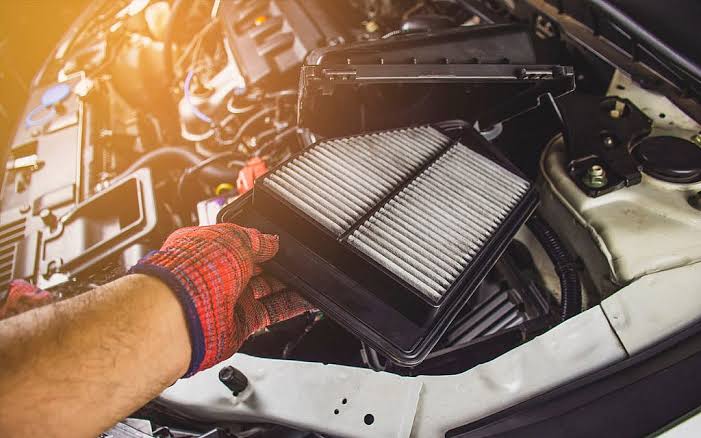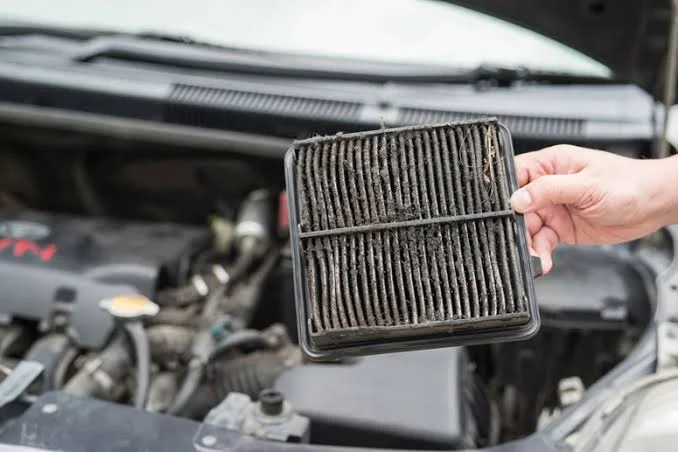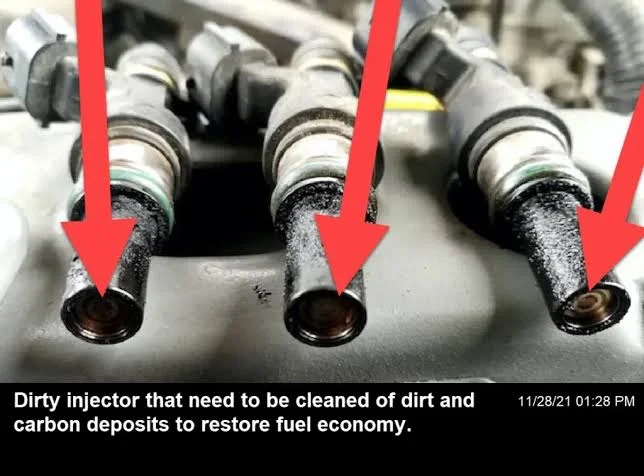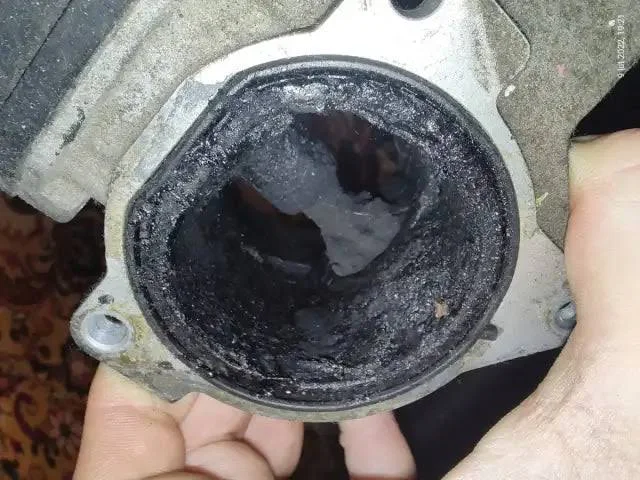Recent automotive statistics reveal a dirty air filter can reduce engine power by up to 11% while silently strangling your car's performance.
This invisible thief operates so gradually that most drivers never notice their once peppy ride becoming a sluggish shadow of its former self.
You fill up at the pump, expecting that familiar surge of power. Instead, your car feels like it's pulling a trailer through molasses. "My tank is full, so what's wrong?" you wonder, tapping the accelerator with growing frustration. The answer might surprise you. Your fuel level isn't the problem, it's what's happening to the fuel and air before they reach your engine.
I've diagnosed thousands of these cases over my career, and the culprits are usually hiding in plain sight. Let me walk you through the most common reasons your car feels sluggish despite having plenty of gas, and more importantly, how to fix them.
The Air Filter
Think of your engine as an athlete trying to run a marathon while breathing through a straw. That's exactly what happens when your air filter becomes clogged with dirt, debris, and the microscopic particles floating in our air.
Your engine needs approximately 14.7 pounds of air for every pound of fuel to achieve optimal combustion. When your air filter becomes restricted, this perfect balance gets thrown off completely. The engine control unit tries to compensate, but there's only so much it can do when airflow drops significantly.
How to check your air filter:
- Remove the filter from its housing and hold it up to bright light. If you can't see light passing through easily, it needs replacement. A properly functioning filter should allow light to pass through its pleated surface without significant obstruction.
Most manufacturers recommend replacement every 12,000 to 15,000 miles, but driving conditions matter enormously. If you frequently drive on dusty roads, through construction zones, or in areas with high pollution, you might need to replace it every 6,000 to 8,000 miles.
Fuel Injectors
"This can't be, it always starts," drivers tell me when I mention fuel injector problems. What they don't realize is that fuel injectors can partially fail, causing performance issues long before they prevent starting entirely.
Modern fuel injectors are precision instruments that spray fuel in a carefully controlled pattern and volume. Over time, carbon deposits and fuel contaminants create buildup around the injector tips. This buildup disrupts the spray pattern, leading to incomplete combustion and reduced power output.
Signs your fuel injectors need attention:
- Engine hesitation during acceleration
- Rough idle that smooths out at higher RPMs
- Decreased fuel economy despite consistent driving habits
- Engine misfires under load
The problem develops so gradually that many drivers adapt their driving style without realizing it. They press the accelerator pedal harder to achieve the same performance, masking the underlying issue until it becomes severe.
Professional cleaning vs. additive treatments:
Over the counter fuel injector cleaners can help with minor deposits, but severely clogged injectors require professional ultrasonic cleaning or replacement. I've seen too many drivers waste money on bottle after bottle of additives when a professional service would solve the problem permanently.
The Throttle Body
Your throttle body controls airflow into the engine with butterfly valve precision. Over thousands of miles, this component accumulates carbon deposits and oil residues that interfere with smooth operation.
When carbon builds up on the throttle plate and bore, it creates an irregular surface that disrupts airflow patterns. The engine control unit expects a certain airflow at specific throttle positions, but carbon deposits change these calculations entirely.
Symptoms of throttle body contamination:
- Jerky acceleration from a standstill
- Inconsistent idle speed
- Engine stalling when coming to a stop
- Reduced throttle response
"My car used to be so responsive," is a common complaint I hear. Drivers often describe their vehicles as feeling "disconnected" or "lazy" compared to when they were new. This gradual performance degradation typically points to throttle body issues combined with other maintenance-related problems.
Carbon Buildup
Modern engines with direct injection face a particular challenge: carbon buildup on intake valves. Unlike port injection systems where fuel helps clean the valves, direct injection sprays fuel directly into the combustion chamber, leaving intake valves exposed to oil vapors and combustion byproducts.
This carbon accumulation reduces airflow into the cylinders and changes compression ratios. The result feels like driving with the parking brake partially engaged, you have power, but accessing it requires more effort than it should.
Direct injection maintenance
Professional walnut blasting or chemical cleaning services can remove carbon deposits from intake valves. This service typically costs between $300-600 but can restore significant lost performance in high-mileage direct injection engines.
Fuel System Pressure
Your fuel system operates under precise pressure specifications. When fuel pumps begin failing or fuel pressure regulators malfunction, the symptoms often mimic other problems.
Insufficient fuel pressure prevents proper atomization of the fuel spray. The engine receives fuel, but not in the optimal condition for efficient combustion. This creates a situation where your car runs but feels underpowered across all driving conditions.
Fuel pressure testing:
Professional diagnosis requires connecting a fuel pressure gauge to the system and comparing readings to manufacturer specifications. This isn't a DIY procedure for most drivers, but it's essential for proper diagnosis when multiple symptoms suggest fuel delivery issues.
The Maintenance Reality Check
"I change my oil regularly, so everything should be fine," drivers often tell me. Oil changes are crucial, but they represent only one aspect of engine maintenance. The components I've discussed air filters, fuel injectors, throttle bodies all require attention on different schedules.
Creating a comprehensive maintenance timeline prevents the gradual performance loss that catches most drivers off guard. When you address these items proactively, you maintain the performance you expect instead of wondering why your car feels different than it used to.
Preventive maintenance schedule:
- Air filter: Every 12,000-15,000 miles (or as conditions dictate)
- Fuel injector cleaning: Every 30,000-40,000 miles
- Throttle body service: Every 40,000-60,000 miles
- Carbon cleaning (direct injection): Every 60,000-80,000 miles
Taking Action
The next time you fill up and still feel disappointed by your car's performance, remember that fuel quantity isn't everything. Your engine needs clean air, properly atomized fuel, and unobstructed pathways for both.
Start with the simplest diagnostic step: check your air filter. It takes five minutes and costs nothing to inspect. If that's clean, the problem likely requires professional diagnosis to identify whether fuel injectors, throttle body contamination, or other issues are stealing your car's performance.
Don't accept sluggish acceleration as normal aging. With proper maintenance and timely attention to these common problems, your car can maintain its performance characteristics for years beyond what most drivers expect. The key is recognizing that prevention costs far less than waiting for complete component failure.
Your car's performance is trying to tell you something. The question is: are you listening?




Comments (0)
Please login to join the discussion
Be the first to comment on this article!
Share your thoughts and start the discussion